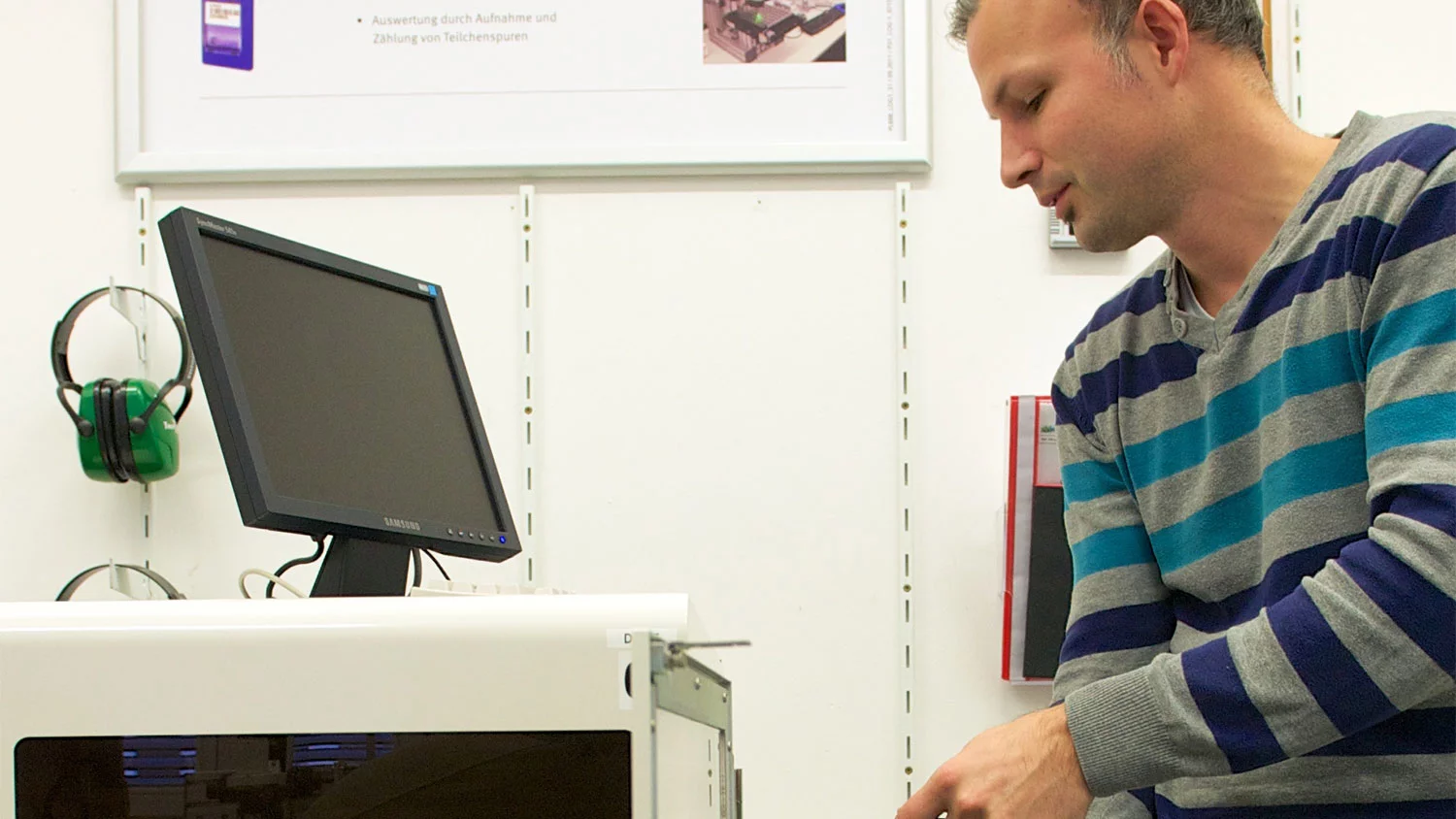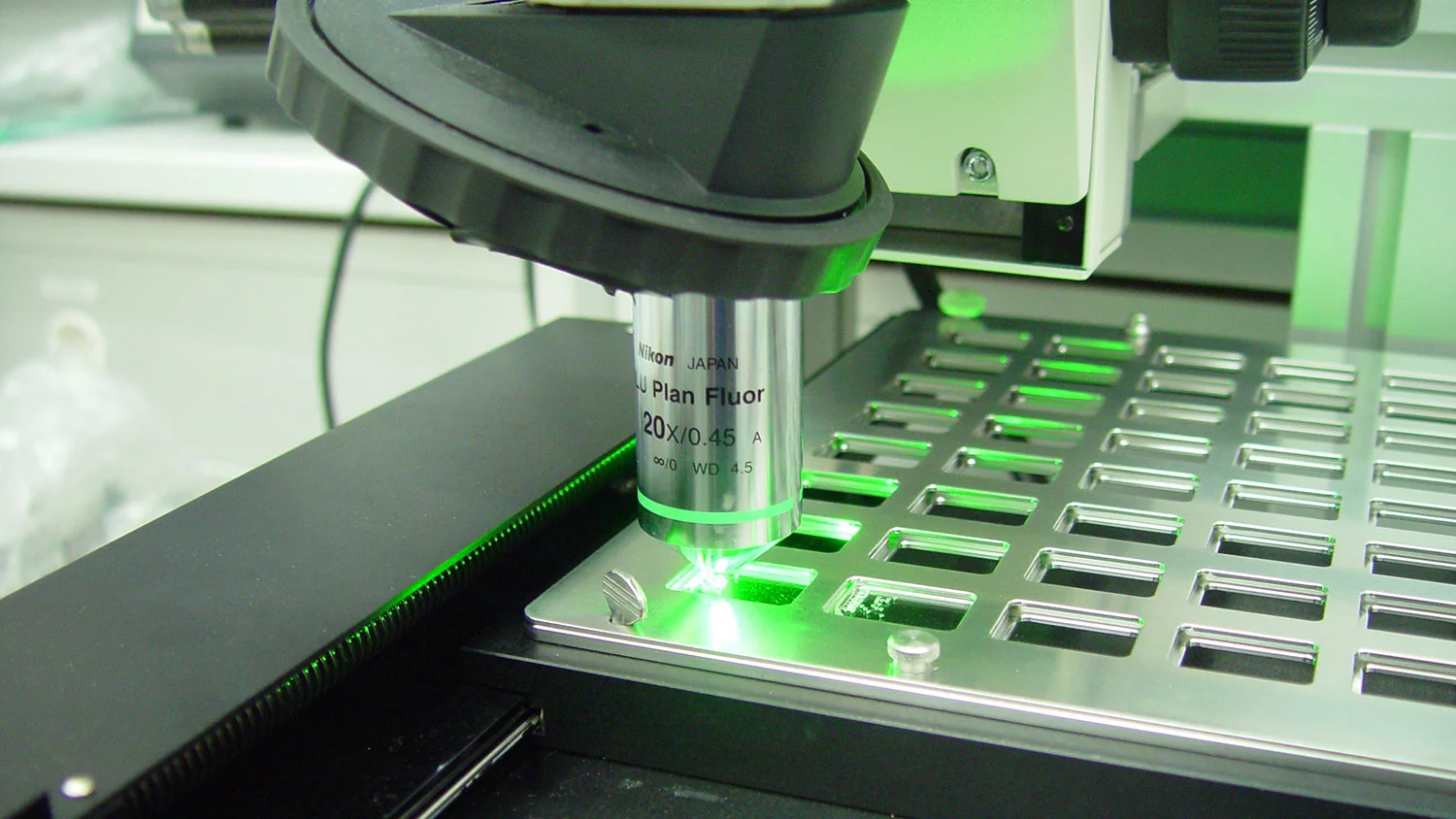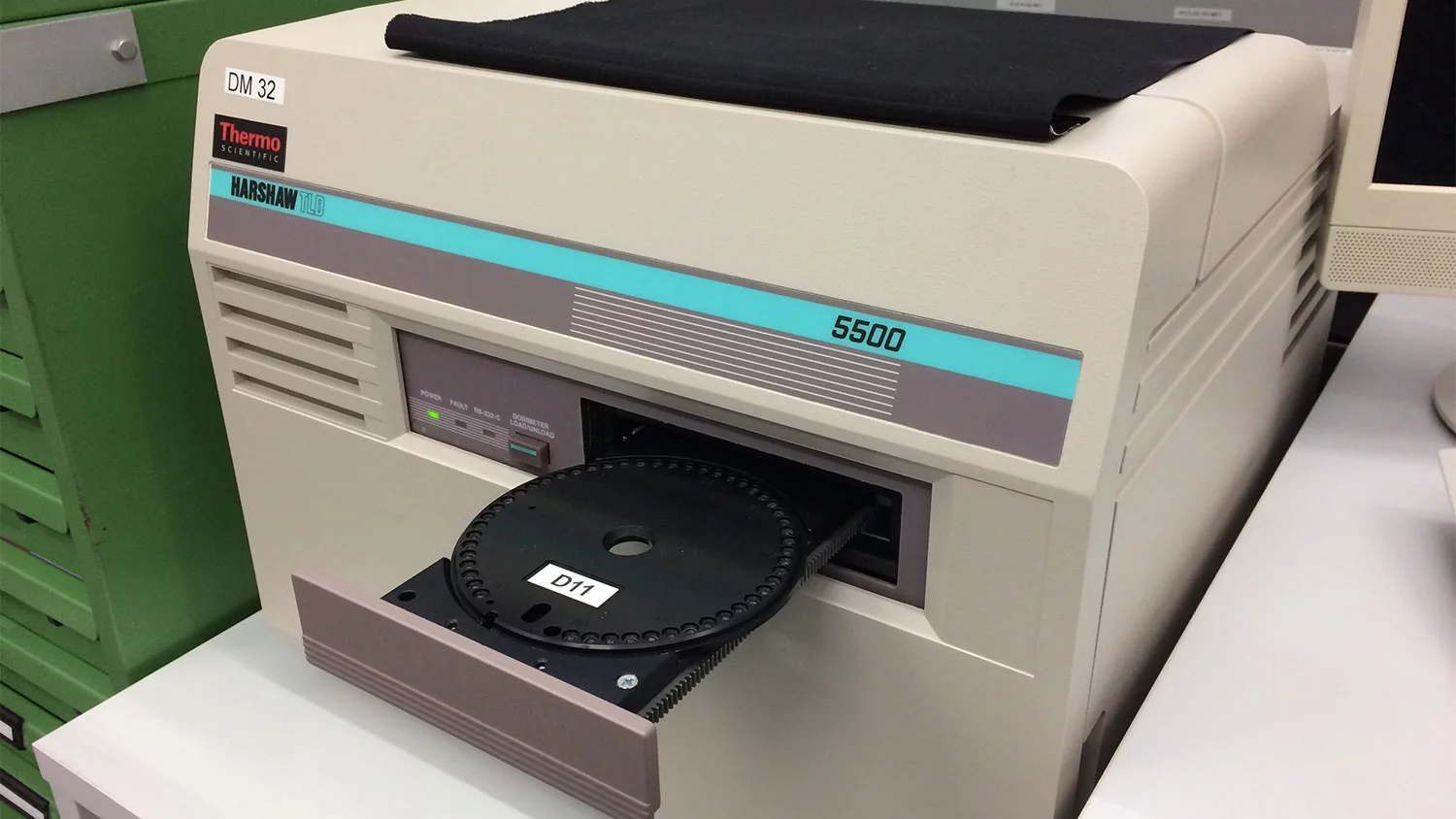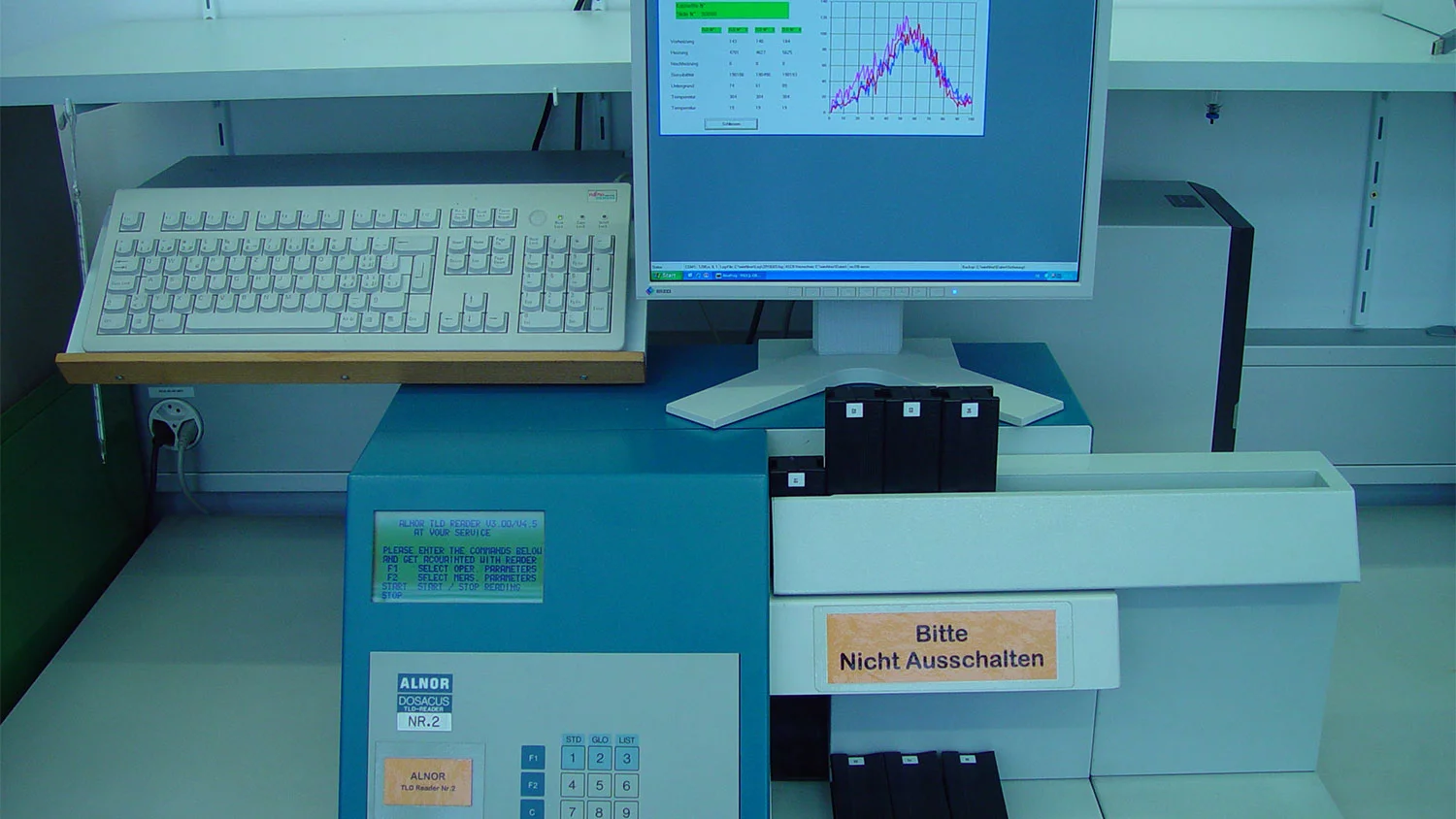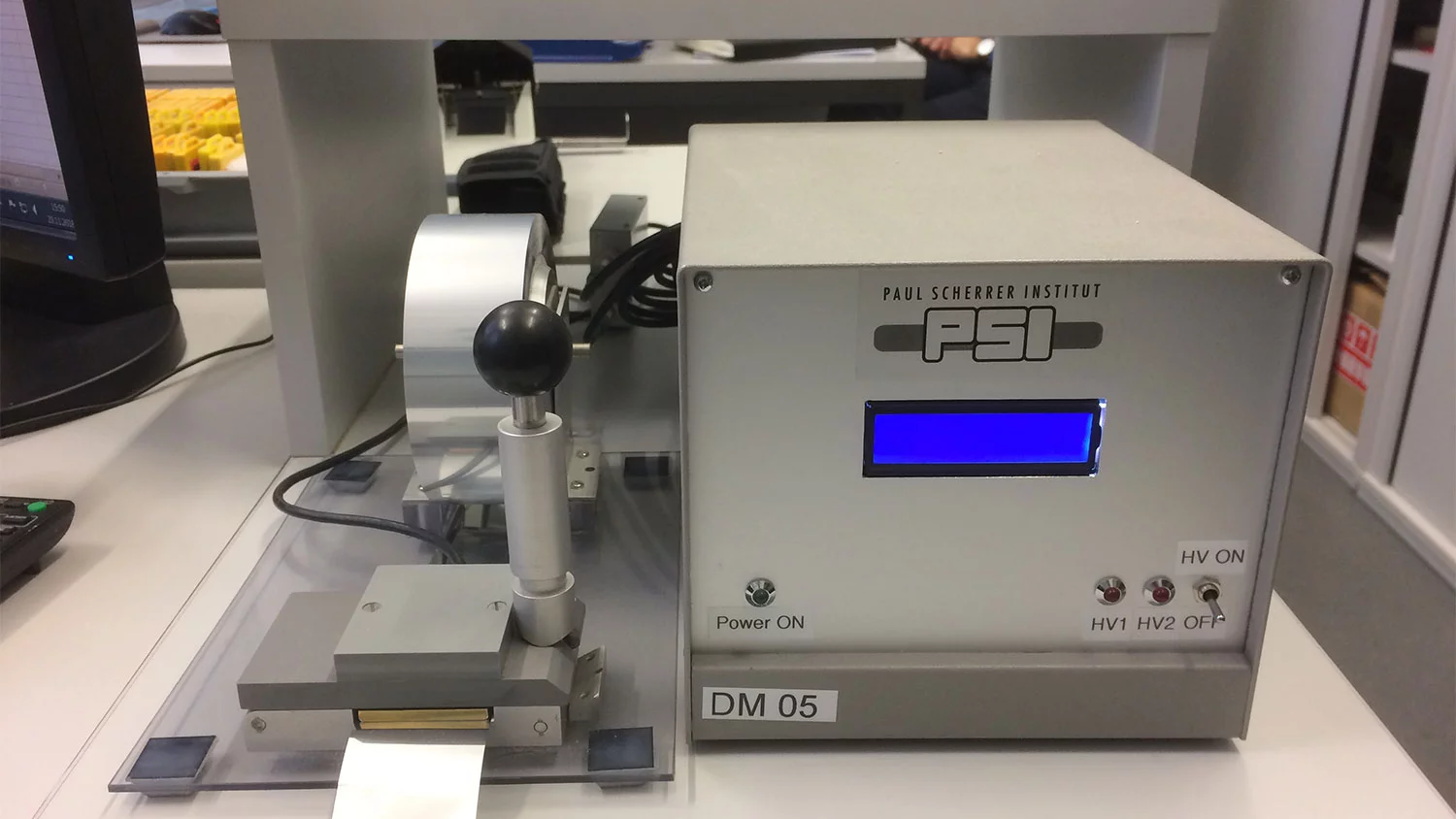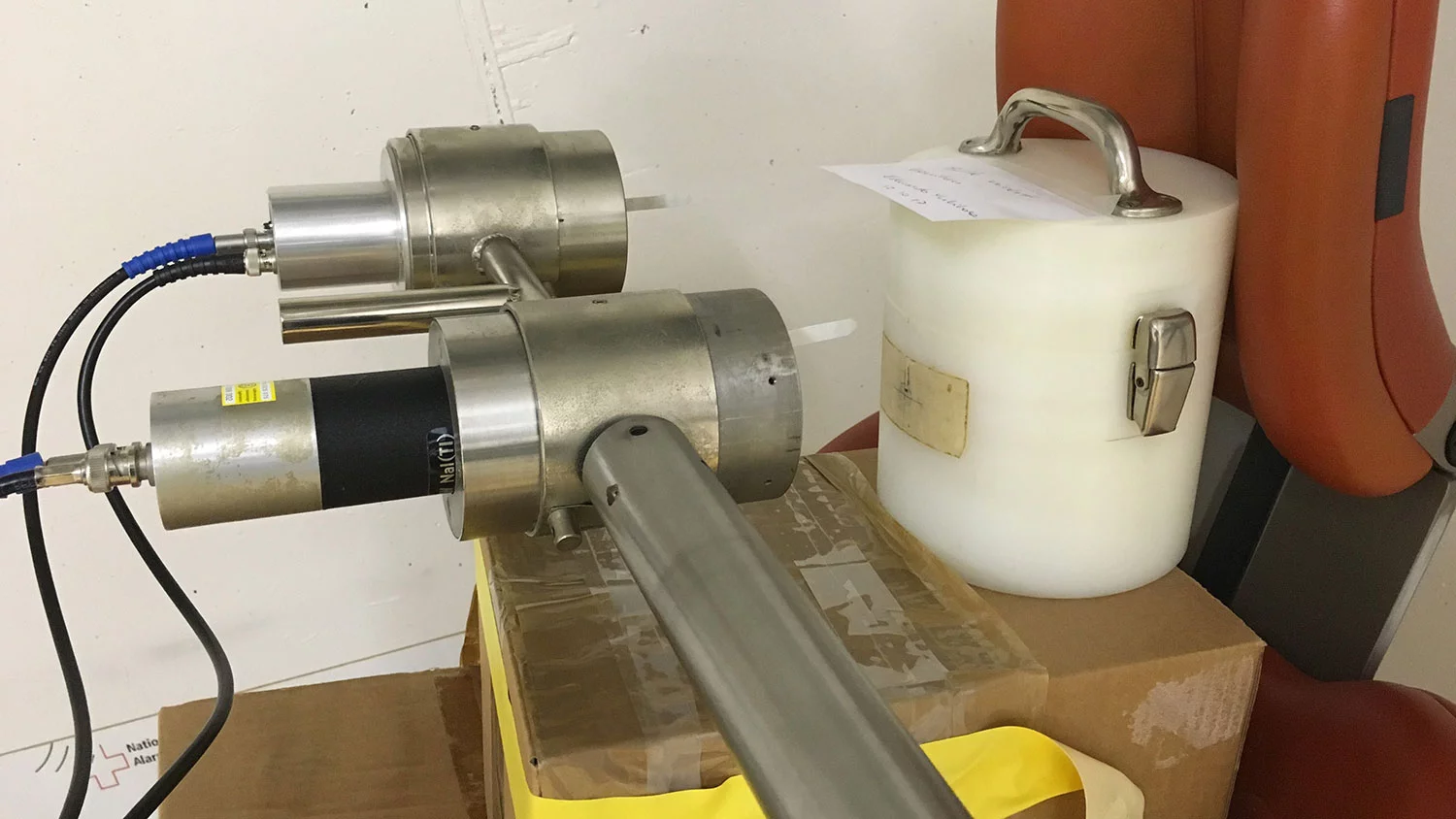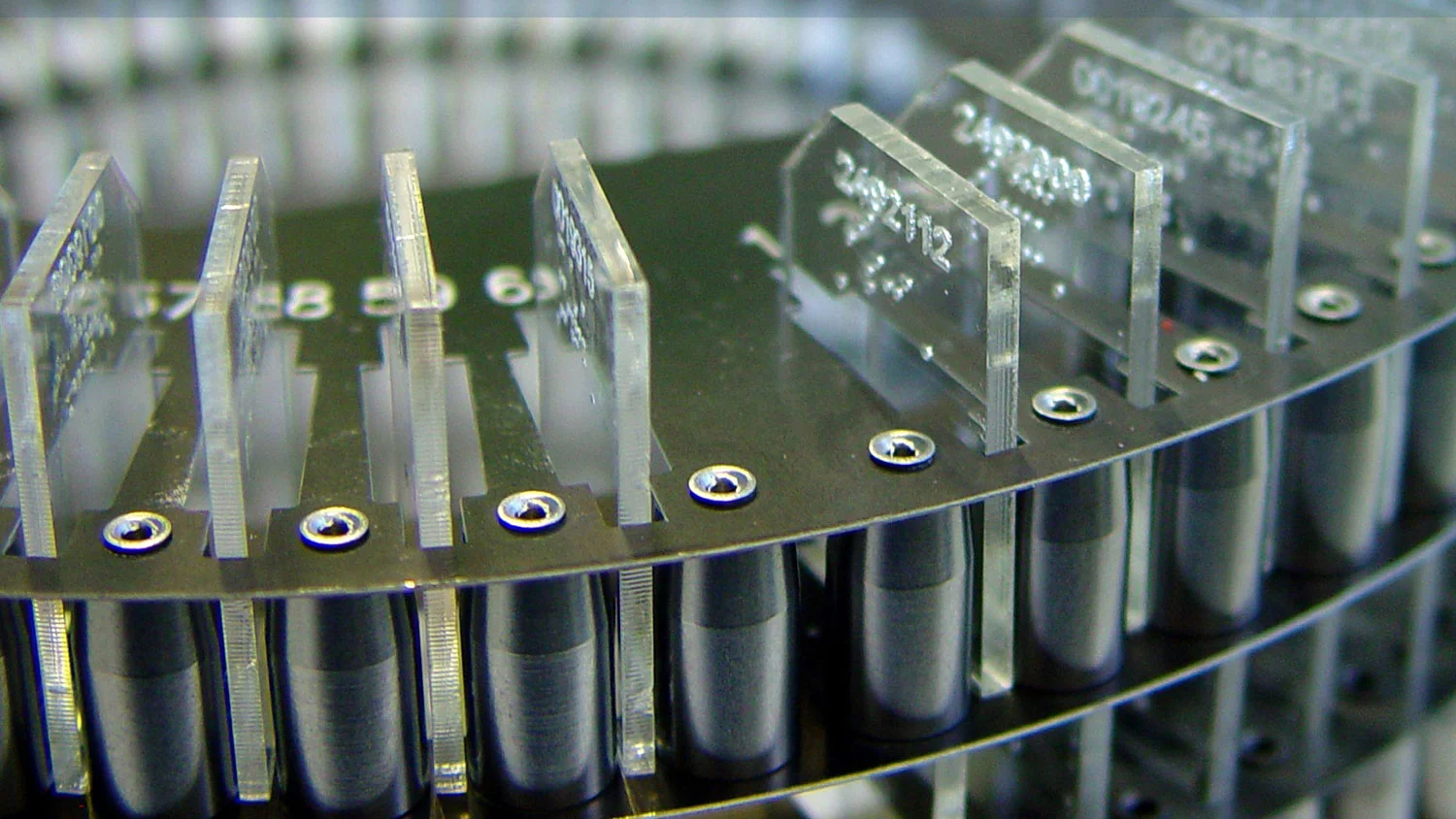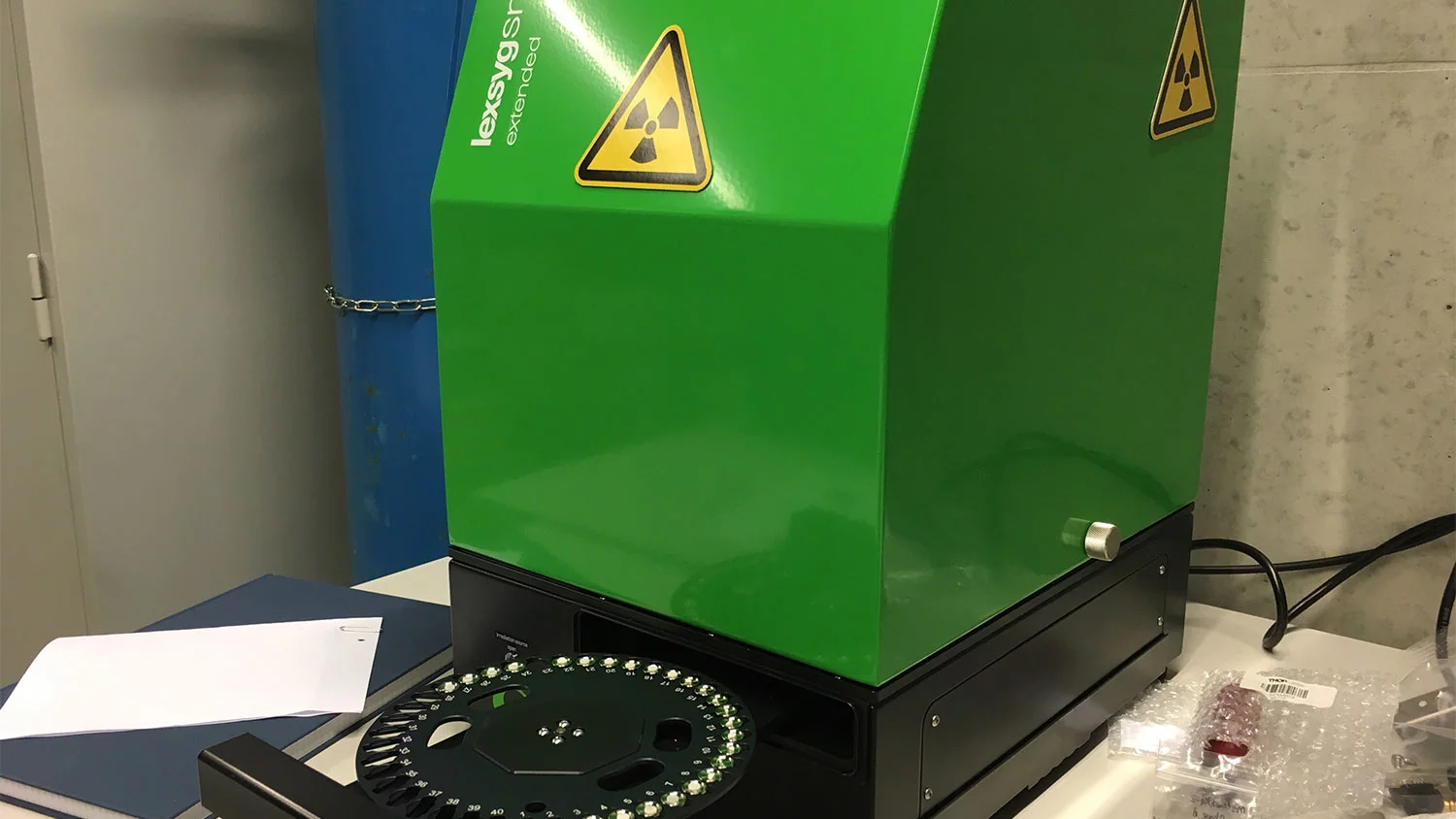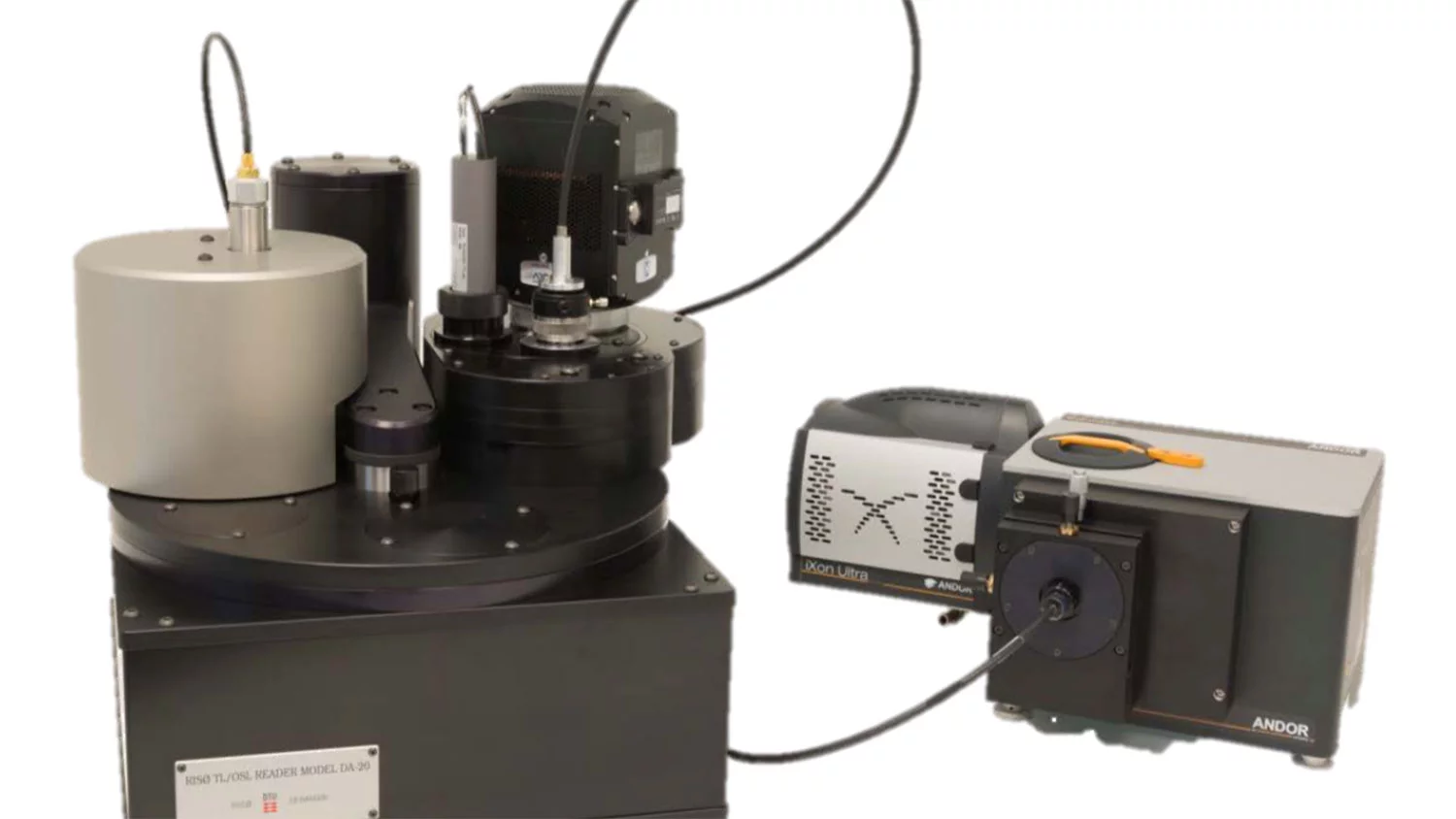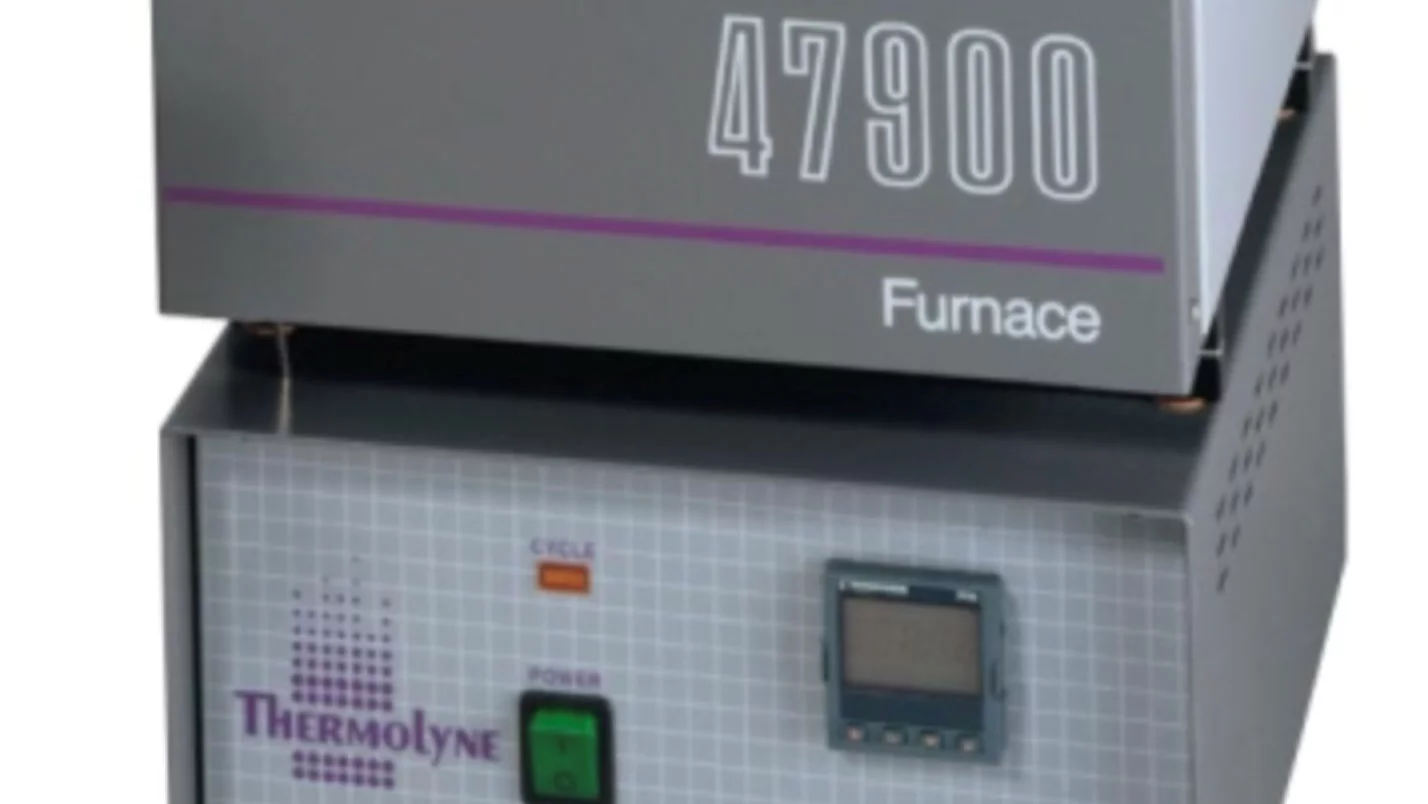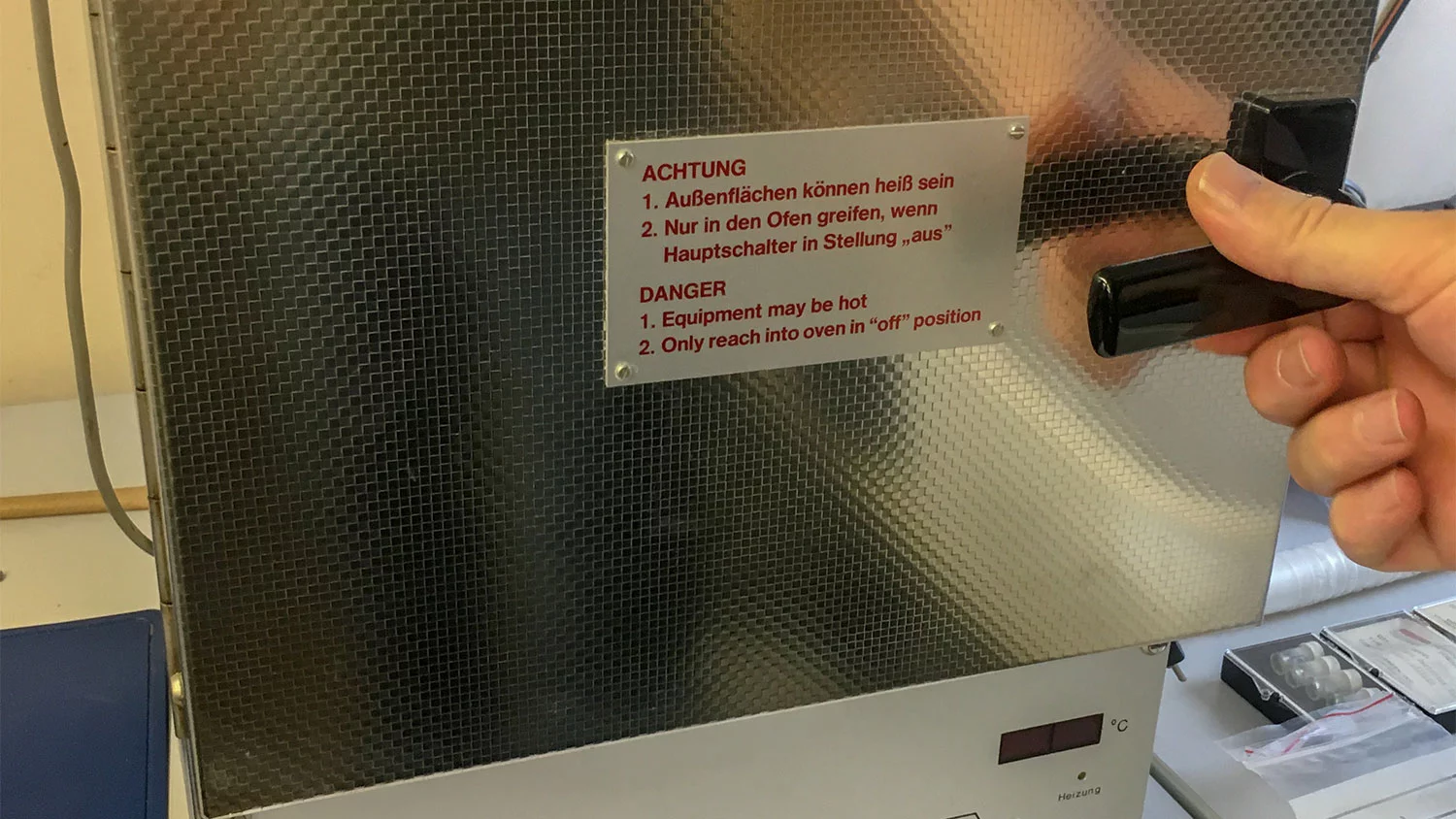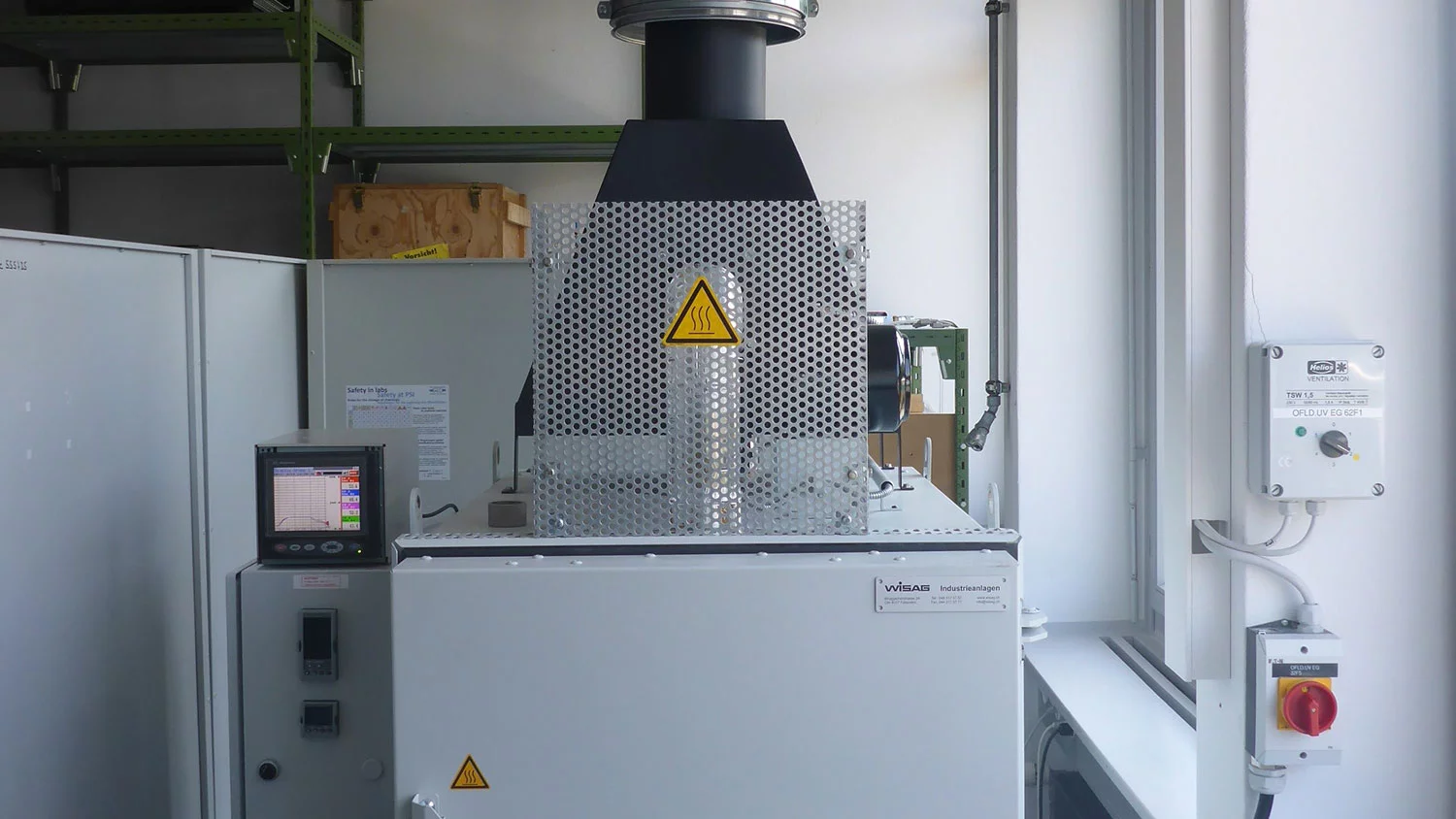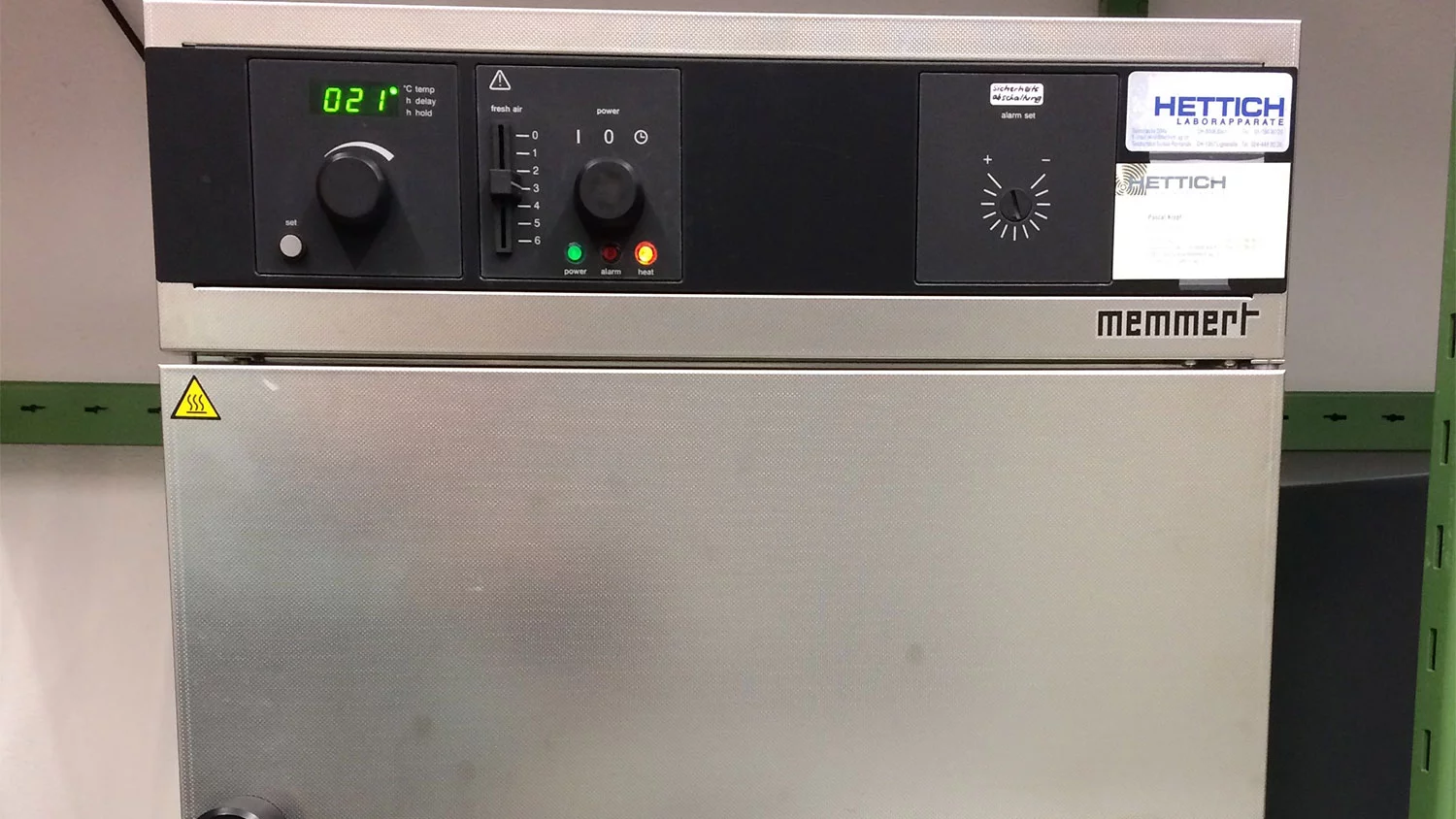The Dosimetry Group is well equipped for routine radiation dosimetry using a variety of techniques and types of detectors, including radiophotoluminescence (RPL) detectors, thermoluminescence detectors (TLDs), fission track foils, and plastic nuclear track detectors (PNTD).
We are also expanding our research facilities for the investigation of luminescence materials and processes, with the acquisition of modern thermoluminescence (TL) and optically stimulated luminescence (OSL) readers (see below).
In addition, we have access to PSI’s Calibration Laboratory, where irradiation with calibrated gamma sources (Cs-137, Co-60), neutron sources (Cf-252, Am-Be) and x-rays are possible.
FGD-660 RPL readers (Chiyoda Technol Co.)
Two modern automated RPL readers with capacity of up to 2000 glass detectors each provide efficient readout of the dosimeters used in the routine.<
TASLImage Systems (Track Analysis Systems Ltd., Bristol, UK)
Two automated readers for poly allyl diglycol carbonate (PADC) detector are used for the routine neutron dosimetry service.
Harshaw TLD readers
Two Harshaw TLD readers are used for the readout of individual TLDs for dosimetry of extremities (finger ring).
ALNOR TL reader
The automated TL reader is used for the readout of Al2O3:C and LiF:Mg,Ti TLDs used in environmental dosimetry.
FUNKOMAT reader
The FUNKOMAT reader is used for the readout fission fragment detectors used in environmental dosimetry.
High-purity Germanium (HPGe) detector
A HPGe detector is used routinely as a whole body counter for incorporation measurements.
NaI:Tl detectors for thyroid measurements
Two NaI:Tl detectors (Bicron 1XM.040/1.5B, 2.54 cm diameter, 1 mm thickness) and , Beryllium-window) and a NaI:Tl detector (Harshaw integral line 4S4/1.5G- X, 2.54 cm diameter, 2.54 cm thickness) are used for routine thyroid monitoring.
Ancillary chemistry equipment for etching
The laboratory is also equipped for the chemical etching of the poly allyl diglycol carbonate (PADC) detectors used in the routine neutron dosimetry service and for research.
The laboratory is also equipped for the chemical etching of the fission fragments detectors used in the routine environmental dosimetry.
Lexsyg smart extended
Automated thermoluminescence (TL) and optically stimulated luminescence (OSL) reader with capability to handle up to 40 samples.
The following measurements are possible:
- TL measurements up to 700 °C
- OSL with blue, green or IR stimulation
- LM-OSL
- POSL
The reader is also equipped with:
- 90Sr/90Y beta source for sample irradiation
- 6 position filter wheel for automated detection window selection
State-of-the-art automated Risø TL/OSL/RL reader
Automated Risø TL/OSL reader (model DA-20) equipped with:
- 90Sr/90Y beta source (1.48 GBq)
- 241Am alpha source (10.7 MBq)
- TL and OSL detection using photomultiplier tube (Electron Tube PMD 9107-CP-TTL)
- OSL stimulation with IR (850 nm, 300 mW/cm2), green (525 nm, 40 mW/cm2) or blue LEDs (470 nm, 80 mW/cm2)
- Sample carousel with capacity for 48 samples
- Two filter wheels for automated detection window selection
- Automated detector changer
- High sensitivity emission spectrometer consisting of Andor iXon Ultra 888 EMCCD camera (model DU-888U3-C50-UVB-1K1) coupled to a Kymera 193i-A spectrograph (Andor, S/N KY-3710)
- Radioluminescence detection using cooled photomultiplier tube (Hamamatsu H7421-50, 380-890 nm) or the high sensitivity spectrometer
- Extra heating and lifting module for irradiation at elevated temperatures
- Near UV light source (395 nm)
- Pulsed OSL attachment with Time-Correlated Single Photon Counting (TCSPC) for time-resolved OSL measurements (PicoQuant TimeHarp 260)
- Vacuum pump for alpha irradiation
The following measurements and studies are possible with the instrument:
- Investigation of TL from inorganic materials (powder, single crystals and ceramics) up to 700 °C
- CW-OSL, LM-OSL and POSL with time-correlated single photon counting of luminescent materials with blue, green and IR stimulation
- Measurement of TL, RL and OSL emission spectra
- RL (integrated or spectrally resolved) at room or elevated temperatures
- Studies involving near UV (395 nm) bleaching or illumination
- Thermal quenching studies for various emission bands using irradiation at elevated temperatures and detection using the high-sensitivity spectrometer
- Investigations of ionization density dependence of TL and OSL signals by comparing alpha and beta irradiation
The main advantage of this instrument is that most of the measurements can be done automatically for various samples or various conditions (various doses, bleaching times and sources, optical filters, irradiation temperatures, etc.), providing efficient data collection. The combinations for investigations of luminescence materials are almost limitless.
Thermo Thermolyne Muffel furnace
Thermo Thermolyne Muffel furnace with a C1 controller (F48020-33-80) for heating profiles with up to 8 segments. Annealing up to 1200 °C is possible.
PTW - TLDO
PTW – TLDO oven for automated annealing of LiF:Mg,Ti detectors. Annealing up to 400 °C is possible.
WISAG KU 140/06/A
WISAG KU 140/06/A oven with a Eurotherm 3508 controller for heating profiles. Annealing up to 650 °C is possible.
Included:
- Eurotherm 3216, maximum temperature limitation
- Circulating air speed controller
- Fresh air supply with blower
Memmert ULE 400 oven
Memmert ULE 400 oven with forced air circulation Heat up to 220 °C is possible
